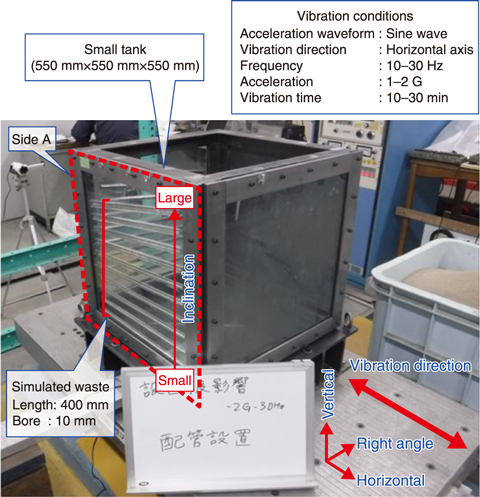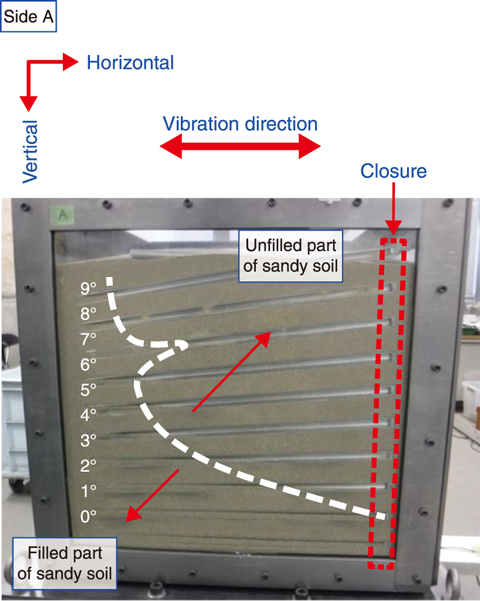
Fig.8-9 Test setup, including box and vibrator

Fig.8-10 Resulting
This work prototyped a trench-type disposal of very low-level radioactive wastes generated in the research and development of the nuclear energy as well as medical, industrial uses of radioisotope expect nuclear power plant in Japan. The metal waste was placed into metal containers for ease of handling and to prevent the radioactive materials from scattering.
However, voids remain in the filled containers because current regulation does not require them to be fully solidified (e.g., by filling in the voids with sand or cement). Large voids may lead to depressing the cover soil of trench-type disposal facility after long time period. It is thus necessary to fill the containers with sand to reduce the void volume to or below 20%. The void volume in a container can be evaluated on the basis on the weight and density of sand inserted into a container.
This work therefore aimed to examine the filling property of simulated wastes in a container to develop waste acceptance criteria relevant to standard filling conditions and methods to reduce the void space.
Heat transfer tubes in which a high voids are remained was used as simulated wastes. And we closed the heat transfer tubes of one side were used as a difficult filling condition of simulated wastes (Fig.8-9). As waste is normally placed into a container at random, the heart transfer tubes were placed into a test box in a way that its inclination is larger toward the upper side. The box was then filled with soil while being vibrated on a shaking table. The filling property was visually observed after a certain period of vibration.
The results indicated that box was densely and uniformly filled with soil, leaving the void volume to or below 20% when the heart transfer tubes were set horizontally to the direction of vibration. On the other, the filling rate of soil in the heart transfer tube reduced as the inclination of the heart transfer tube increased (Fig.8-10).
Overall, the void volume of the containers could be reduced to meet the standard when the waste tubes were set horizontally to the direction of vibration. Based on the result, the test conditions for the actual size (about 1 m3) of the metal container were clarified.
Future work will aim to develop filling methods and waste acceptance criteria for metal wastes disposed of in metal containers and confirm them via full-scale tests.